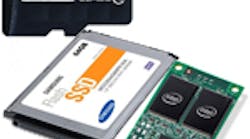As is evidenced by the consumer roar that accompanied the launch of the Apple iPad 2 and the three-block waiting lines to get into the Apple stores, today’s consumers are terribly impatient, conditioned by the “I want it now, right now” multitasking world. They are demanding more novel solutions that provide near instant access to increasingly larger amounts of heterogeneous types of information regardless of time, location, or device. And they want those devices to be as stylish, small, portable, and low-power as possible.
Whether content is delivered through the Internet to a phone or handheld device such as the iPad 2 or through a set-top box for display on a TV set, the relentless drive toward instant information access and ubiquitous collaboration across heterogeneous devices is increasing. Combining this with the increased sensitivity of security when sharing personal and subscription content is making electronics design increasingly complex and situational-dependent and, as a result, requiring systems to adapt at a quick pace.
The marketplace for electronics is at the cusp of the curve in terms of market acceleration for anytime, anywhere, anyplace access to information. A critical but little recognized component at the forefront of enabling these capabilities is flash memory. In 2014, analysts expect sales of the electronic systems in embedded flash memory markets to represent $1.3 trillion. Increasing the functionality of flash memory is at the core of companies’ ability to innovate and differentiate.
Flash Applications
Flash memory is rapidly becoming ubiquitous in consumer applications, most prominently as a displacement for conventional disk storage. For example, Apple’s recently introduced MacBook Air line of laptops has no option for disk-based storage. This has allowed the MacBook Air to have the smallest possible size and weight with no sacrifice in performance or functionality. Flash storage is also appearing in mission-critical systems applications, i.e., datacenters and real-time industrial control.
But these examples represent a basic use of flash memory. Mobile access to data through different devices is increasingly driving more embedded uses of flash memory. Consumers’ appetite for more automated adaptive applications, faster access to data, more interactivity, low power, and local secure privacy in electronics continues to increase with successful adoption of iPads, infotainment in cars, and data access within your community anywhere, anytime with no performance or power penalties.
And flash memory is well within reach of the cost-effective tipping point that will accelerate this proliferation in system applications. The growth of new, collaborative, and compute-intensive system applications is creating significant market demand and innovation requirements for the flash memory industry. This industry is constantly pressured by consumers to bring advanced products to market sooner and at lower price points with smaller form factors and better performance while reducing the amount of power needed.
For example, the automotive semiconductor market is growing rapidly from $21 billion in 2010 to $34 billion in 2012. In today’s automobiles, 80 to 100 microcontrollers provide advanced functionality, and each of those controllers requires embedded memory to increase its functionality. Advanced automotive features at lower costs are enhancing the user experience with applications such as video, 3D, and other apps such as in telematics, hands-free, command and control, and advanced driver assistance (ADAS).
Moreover, government mandates for safety are resulting in ADAS becoming one of the fastest growing markets. With ADAS, essentially new cars will have an electronic copilot watching out for you defensively. What does that mean for flash storage? We are already seeing a fourfold increase in requirements for more embedded memory (16 Mbits going to 128 Mbits in 2015).
What’s Next
Overall the next generation of advanced electronics will run increasingly more software applications and change system requirements, resulting in more intensive memory systems because of the architectural flexibility flash memory enables. These systems will be intelligent and act autonomously in the background, delivering seamless access to data and services on an on-demand basis to consumers. From automotive and industrial control to set-top boxes and TVs to devices yet to be invented, the ability to process data locally and quickly, and more importantly remember it, will become more pervasive.
These trends are driving a technology transition to 32-bit programmable controllers and creating a significant market opportunity for increased flash memory. Flash typically sits adjacent to the microcontroller in the system so as this market rapidly expands, so will flash memory. Also, 32-bit microprocessor revenue is expected to grow 10% annually from now until 2015, bringing new demand for complementary flash memory solutions.
The electronics industry is predicated on continued innovation in memory. Flash memory suppliers are critical in significantly enhancing consumers’ experience in their drive for instant access to interactive data and information.
